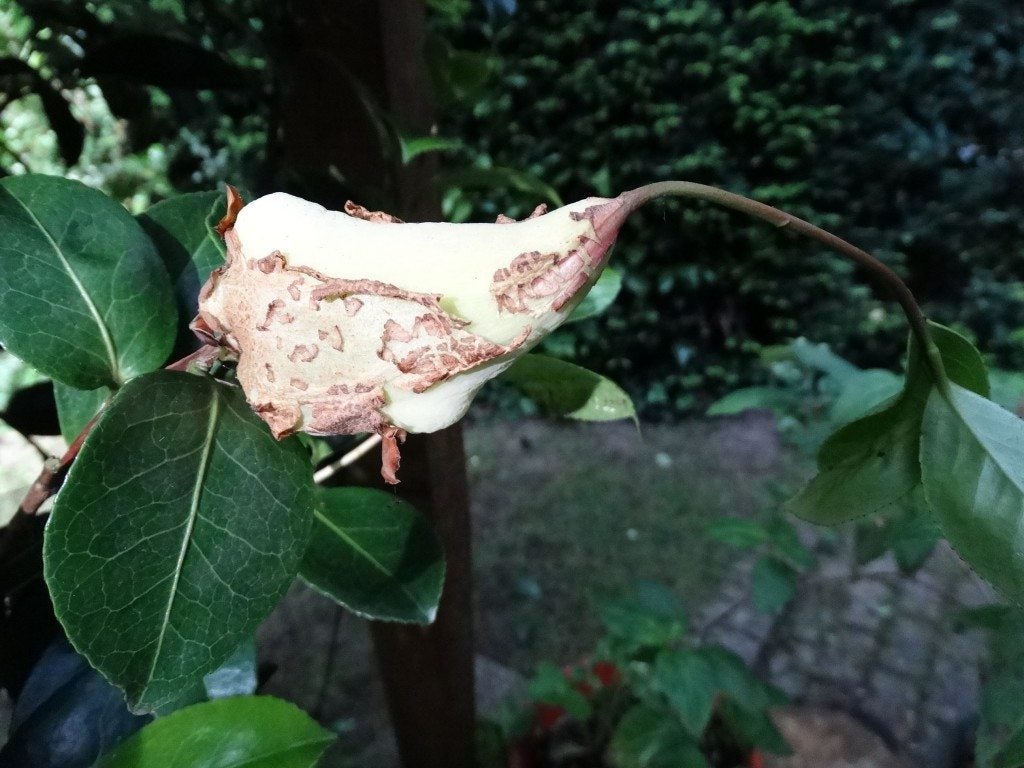Camellia Leaf Gall Disease - Learn About Leaf Gall On Camellias


There is no mistaking leaf gall on camellias. The leaves are most affected, exhibiting twisted, thickened tissue and pinkish green coloring. What is camellia leaf gall? It is a disease caused by a fungus. It can also affect young stems and buds, which affects flower production. For this reason, knowing effective camellia gall treatment is important.
What is Camellia Leaf Gall?
Camellias are proven winners with cool season blooms and glossy green leaves. The plants are relatively hardy and retain their vigor even in harsh conditions. Camellia leaf gall disease doesn't really affect the plant's vitality, but it will depreciate the beauty of the leaves and can reduce blooms. Fortunately, leaf gall on camellias is easy to treat as long as you learn the life cycle of the fungus and follow a few rules. The disfiguring disease stems from the fungus Exobasidium vaccinii. It is a fungus which overwinters in soil and is splashed up onto leaves or blown in on the wind. The fungus is host specific, although there are other species of Exobasidium that affect specific families of plant. The contamination occurs in fall and winter, and galls on camellia leaves form in spring. The affected tissue develops as small bumps, which conform to the regular plant tissue in color. As they get larger, the tissue turns pinkish, and gall can swell to up to an inch (2.5 cm.) in diameter.
Progression of Galls on Camellia Leaves
Galls can be single spots on a leaf or stem or infect the entire tissue. As the galls mature, they turn white on the underside. This is the fungal spores that have ripened inside the plant tissue and starts the life cycle over anew as the spores are dispersed. By late spring to early summer, galls on camellia leaves have turned brown and fallen off the main plant body. Any remaining spores lay dormant in the soil until rain or other mechanisms stir them up and plant them on susceptible plant tissue. Camellia leaf gall is most prevalent on Camellia sasanqua, but it can affect any plant in the genus.
Camellia Gall Treatment
No existing fungal spray is available for control of camellia leaf gall disease. If you have plants that are not affected, you can apply a preventative Bordeaux spray in early spring just at bud break. Pruning the plant to keep air and sunlight flowing through it is also helpful. It is important to catch the disease before the leaves turn white to prevent the spread of the spores. Removal and disposal of the affected plant parts is the best treatment. The fungus will likely persist in compost, which means any plant material must be put in the trash or burned. There are also some leaf gall resistant species to try planting in the landscape.
Sign up for the Gardening Know How newsletter today and receive a free copy of our e-book "How to Grow Delicious Tomatoes".

Bonnie Grant is a professional landscaper with a Certification in Urban Gardening. She has been gardening and writing for 15 years. A former professional chef, she has a passion for edible landscaping.